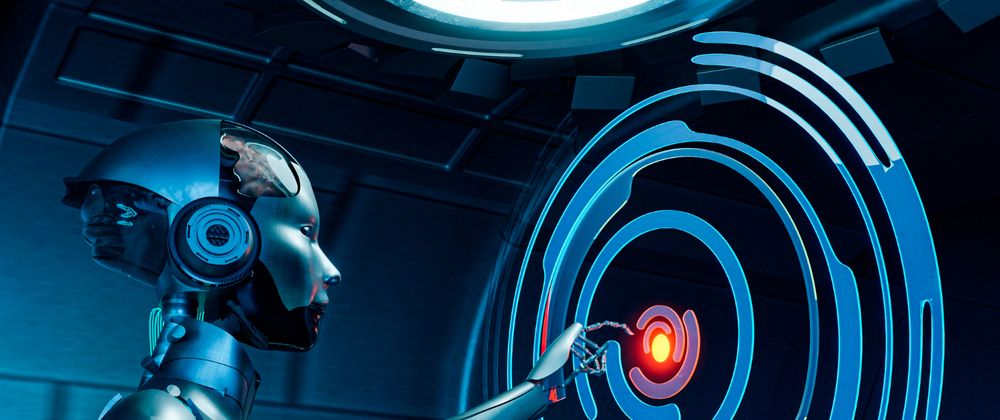The video game industry has always been driven by innovation. From the pixelated worlds of the 80s to today’s hyper-realistic virtual environments, developers continually push the boundaries of what’s possible. One of the most important aspects of creating an immersive experience is realistic game physics—how objects move, collide, and interact in a digital world.
Traditionally, game physics relied on pre-defined rules, mathematical models, and rigid simulation engines. While these approaches provided consistency, they often lacked the flexibility to replicate the chaotic, unpredictable nature of the real world. This is where Machine Learning (ML) is reshaping the industry. By training algorithms on real-world data and using adaptive models, machine learning can create physics that feels not only accurate but also dynamic and life-like.
In this blog, we’ll explore how ML is transforming game physics, its benefits, real-world applications, and how a software development company like [Your Brand Name] can help you build smarter, more immersive gaming experiences.
1. The Limitations of Traditional Game Physics
Game engines like Unity and Unreal have powerful physics engines, but these rely heavily on deterministic equations. For instance, a falling object is programmed to follow Newton’s laws, which works well for basic simulations. However, there are significant limitations:
Predictability: Pre-coded rules make interactions repetitive. After a few minutes, players can often predict outcomes.
Performance Trade-offs: Highly accurate simulations require more computing power, which can slow down gameplay.
Simplifications: Complex natural phenomena like fluid dynamics, cloth simulation, or human body movement are often oversimplified to save resources.
Lack of Adaptability: Traditional physics engines cannot "learn" from past interactions to refine simulations.
This is where ML introduces a new level of flexibility.
2. How Machine Learning Enhances Game Physics
Machine learning enables computers to learn patterns from real-world datasets and apply them dynamically in games. Instead of relying only on rigid physics formulas, ML models adapt and generate outcomes that mimic reality more closely.
Here’s how ML contributes to realistic physics:
a) Learning from Real-World Data
ML algorithms can be trained using video footage, motion capture data, or real-world physics experiments. For example, by analyzing how liquids splash or how fabrics fold, an ML model can replicate these effects in games with a higher degree of realism.
b) Procedural Animation
Rather than relying on pre-recorded animations, ML-driven procedural animation generates movements in real-time. This means a character stumbling on uneven terrain doesn’t repeat the same animation but instead adapts fluidly, creating natural, varied responses.
c) Predictive Physics Models
Machine learning can predict how objects should behave based on previous interactions. For example, in racing games, ML can calculate tire grip on wet roads by learning from millions of simulations, creating driving experiences that mirror real-life conditions.
d) Reducing Computational Load
Traditional simulations of smoke, water, or fire are resource-intensive. ML models, once trained, can approximate these effects more efficiently, offering realism without slowing down performance.
3. Real-World Examples of ML in Game Physics
1. NVIDIA’s DLSS and AI-based Physics Enhancements
While DLSS focuses on upscaling graphics, NVIDIA is also researching AI models for real-time physics. Their NVIDIA PhysX framework uses ML to improve the accuracy and speed of physical simulations.
2. Ubisoft’s Use of AI for Animation and Motion
Ubisoft has been experimenting with ML to create more natural human and animal movements. Instead of scripting every possible action, ML generates lifelike transitions, especially in dynamic environments.
3. AI in Sports Games
Sports titles like FIFA and NBA 2K benefit immensely from ML. Instead of pre-programmed ball trajectories or player collisions, ML helps simulate real-world momentum, ball spin, and unpredictable player interactions.
4. Indie Game Innovations
Smaller studios use ML for cloth physics, terrain deformation, and weather systems. This democratizes realistic physics, making them accessible beyond AAA titles.
4. Benefits of ML-Driven Physics
Greater Immersion: Realistic physics keeps players engaged by making digital worlds behave like the real one.
Dynamic Interactions: Instead of repetitive outcomes, ML introduces subtle variations, making every playthrough unique.
Performance Optimization: Trained ML models deliver near-realistic results at a fraction of the computational cost.
Smarter NPC Behavior: Beyond just physics, ML can help non-playable characters interact with environments more naturally.
Creative Possibilities: Game designers are no longer restricted to rigid rules; ML opens up opportunities for entirely new genres of interactive experiences.
5. Challenges in Implementing ML for Game Physics
While the benefits are clear, challenges exist:
Training Data Requirements: ML models need massive amounts of high-quality real-world data to function accurately.
Unpredictability: ML-based physics can sometimes produce unexpected or “unrealistic” results, breaking immersion.
Integration Complexity: Adding ML models into existing engines like Unity or Unreal requires advanced technical expertise.
Hardware Limitations: Although ML is optimized for GPUs, older systems may struggle to support real-time ML-driven simulations.
6. The Future of ML in Game Physics
Looking ahead, machine learning will play an even greater role in shaping immersive experiences:
Fully AI-Generated Physics Engines: Instead of pre-built engines, future games may run on ML-trained engines capable of simulating entire ecosystems dynamically.
Personalized Physics: ML could adapt physics based on player behavior, making games feel uniquely tailored.
VR and AR Integration: Realistic physics is crucial for immersion in virtual and augmented reality. ML will be key to bridging the gap between real and virtual worlds.
Cross-Industry Influence: Advances in ML-driven physics won’t just benefit games—industries like simulation training, robotics, and film animation will also see breakthroughs.
Conclusion
Machine learning is revolutionizing game development by transforming the way physics is simulated and experienced. From lifelike animations and dynamic collisions to efficient simulations of complex phenomena, ML adds layers of realism that traditional methods could never fully achieve.
At WeeTechsolution, we specialize in custom software development, including AI and machine learning solutions tailored for gaming and simulation projects. If you’re looking to create more immersive, realistic, and high-performing games, our expert team can help bring your vision to life.
Contact us today to learn how we can build your next-generation gaming solution with cutting-edge machine learning technology.



Top comments (16)
To choose the best casino, you should definitely study relevant ratings. I didn't know where to find something like this myself before, but then I discovered a rating with reviews and descriptions of various casinos on f1casino79.com . This means you'll definitely have a lot to choose from and you'll be able to find the most relevant review, with arguments and facts. This is an in-depth analysis based on documented data. So, I recommend studying it.
I’m trying to locate the most reliable source for a counter strike 1.6 indir here in Turkey, and I’d love to hear from players who have recently grabbed a working version. I’ve seen a lot of options online, but the problem is that many of them look suspicious or include versions that don’t feel stable. Since this is one of the most iconic shooters ever made, I want a version that keeps the original experience intact while still running well on modern systems.
This post nails ML's edge over traditional engines—predictive models for tire grip or smoke sims run way smoother than brute-force math! GameNGen's DOOM neural engine at 20+ FPS? Mind-blowing. When you're not tweaking sims, Getting Over It APK is a hilariously tough physics rage-test. What's your fave ML physics demo?
Spot-on intro to how ML is revolutionizing game physics—ditching rigid rules for neural models trained on real data makes collisions, fluids, and destruction feel truly alive! Unity ML-Agents and NVIDIA PhysX integrations are killing it for real-time sims. For organizing your ML physics experiments or Unity projects, Honista v11.1 has fantastic tools to track datasets and prototypes. Can't wait for the full breakdown!
Right now most games I play still rely on the old unity/unreal physics anyway. In fact, I have played many games that does not use any engine & physics but still too engaging like this one spend bill gates money
The idea of machine learning shaping more realistic game physics is fascinating — it’s like games are moving closer to simulating real life with every step. I like how ML can analyze countless scenarios and outcomes, making movements feel less scripted and more natural, which really amps up immersion. It reminds me of how Pirlo TV changes the viewing experience of sports: just like ML makes gaming smoother and more real, Pirlo TV makes watching live matches feel seamless and accessible. Do you think players value this realism in games as much as fans value the authenticity of watching a live match on Pirlo TV?
Absolutely fascinating read — machine learning is really changing the game (literally) when it comes to realistic physics and dynamic interactions. The shift from rigid rules to adaptive, data-driven systems opens up so much potential, not just for AAA studios but indie devs too.
If you're into mobile gaming and modded experiences, I've been exploring similar innovations on Android platforms — feel free to check out my site
this makes sense why games like FIFA or NBA 2K feel different every year even if they look the same. I thought it was just better animations, but the ML physics part explains a lot. @geometry dash
That’s an interesting take! Machine learning significantly enhances the naturalness of games by analyzing vast amounts of data and simulating physics more closely to real-life scenarios. In titles like FR Legends Mod APK, this type of technology could make car handling, tire grip, and collision responses far more authentic giving players a smoother and more immersive experience on every track.
Custom Resolution Utility is a lightweight Windows tool that lets users create and modify custom display resolutions and refresh rates by editing a monitor’s EDID. It’s commonly used to unlock unsupported resolutions, fix display detection issues, and optimize screen performance for gaming or professional use.
Some comments may only be visible to logged-in visitors. Sign in to view all comments.